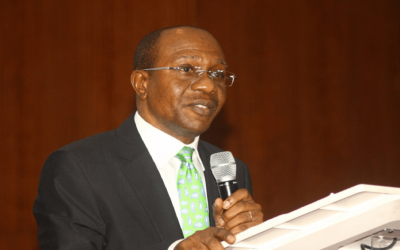CBN pumps N701 billion back into circulation in March 2023 to ease cash at ATMs

Nigeria’s currency in circulation increased to N1.68 trillion in March 2023, a 71.4% rise from the previous month.
The surge in currency circulation is attributed to the Supreme Court’s judgment to return old notes back into circulation.
Nigeria’s money supply rose to N54.6 trillion in March 2023, with credit to the private sector increasing to N43.1 trillion and credit to the government dropping to N27.5 trillion.
Nigeria’s currency in circulation rose to N1.68 trillion in March 2023, a 71.4% increase compared to N982.1 billion recorded as of the previous month indicating an additional N701.4 billion pumped back into circulation during the month.
This is according to data tracked by Nairalytics from the Central Bank of Nigeria’s website.
Currency in circulation reversed its downward trend, which had fallen to a 14-year low of N982.1 billion in February 2023.
The surge in the circulating currency is likely on the back of the judgment by the Supreme Court to return old notes back into circulation following a case brought to court by state governors who were against the policy.
Also, currency outside the banking system increased to N1.44 trillion in the review month from N843.3 billion in the previous month, representing an increase of N602.1 billion (71.4%) in one month.
Further analysis showed that about 86% of the circulating currency is outside the banking system. This is around the same as recorded last year in October when the CBN announced the naira redesign policy.
How did this happen?
The rise in circulating currency in the country is despite the contractionary measures adopted by the central bank. The CBN in the same direction as other central banks of the world has consistently raised the monetary policy rate (MPR) in the last ten months.
Specifically, between May 2022 and March 2023, the benchmark interest rate has been increased by 650 basis points from 11.5% to 18% per annum, with the aim of taming the rising inflationary pressure in the country.
The CBN adopted a twin approach of interest rate hikes and naira redesign to mop excess liquidity from the economy, whilst encouraging cashless policy.
However, a series of events characterized by an intense cash crunch and high cost of goods and services ensured the failure of the naira redesign policy.
The inability of the banking system to onboard the massive influx of mobile users triggered a massive cash scarcity as well as unsuccessful online transactions, which was exacerbated by several reports of account hacks and fake alerts.
Following the impact of the cash crunch on the populace, the Supreme Court ruled that the old notes be brought back into circulation, resulting in a surge in the amount of cash in the system.
The money supply is still on the rise
Nigeria’s money supply rose to N54.6 trillion in March 2023 from N53.3 trillion recorded as of the previous month, representing the highest level on record.
This is following the increase in the two components that make up the money supply (M3), Net Foreign Assets (NFA) and Net Domestic Assets (NDA).
NFA increased from N5.5 trillion in February 2023 to N5.99 trillion in the review month, while NDA stood at N48.64 trillion as of the end of March 2023 from N47.8 trillion in the previous month.
Credit to the private sector also increased to N43.1 trillion in the same period from N41.8 trillion, while credit to the government dropped to N27.5 trillion from N28.43 trillion recorded as of the previous month.

